December 2025

The global rat and mouse model market size was estimated at US$ 1.46 billion in 2023 and is projected to grow to US$ 3.10 billion by 2034, rising at a compound annual growth rate (CAGR) of 7.10% from 2024 to 2034.
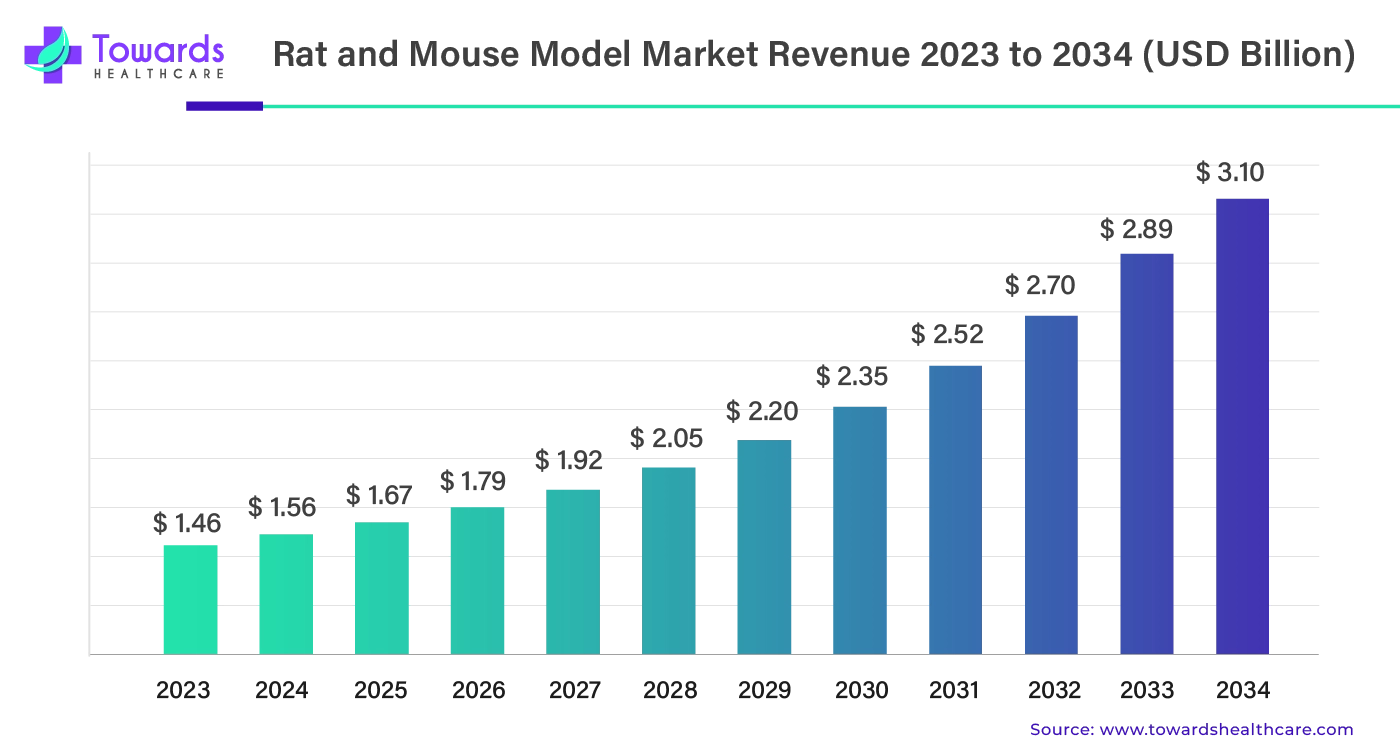
In fundamental medical research, it is crucial to establish suitable animal models of disease; rats and mice are now the most popular species for this purpose. With the advent of gene-editing tools, researchers now have more options than ever before when it comes to creating appropriate animal models for in vivo investigations. These models may be developed in both mice and rats. Rat models provide a number of benefits for particular scientific applications, such as neurology, even though mouse models have been the majority of use in the last century. For many years, significant advancements in a variety of biological research fields, such as psychology and cardiovascular disease, have been fueled by the use of mice and rats.
Through the analysis of large and complicated datasets, the enhancement of experimental design, and the prediction of results, AI and ML may optimize preclinical investigations conducted on animal models. Researchers may now take more significant insights from animal trials because of this integration. To enhance the translation of results, AI and ML may integrate studies of data from animal models with clinical data from humans. Findings from animal models are more applicable to human illness because of this integrated strategy, which helps close the gap between preclinical and clinical research. A key component of artificial intelligence is machine learning (ML), which builds predictive models by learning from data and steadily improving prediction ability through practice.
For instance,
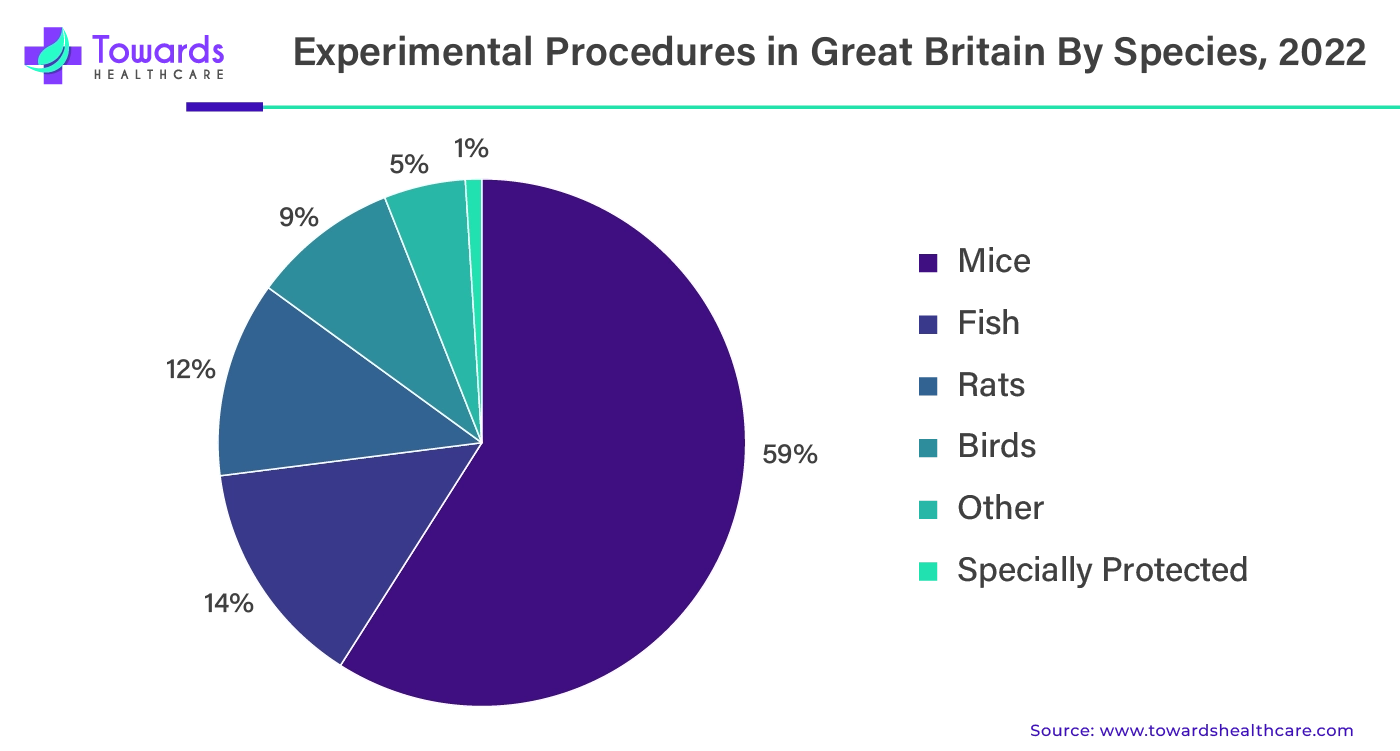
The rat and mouse model market is driven by continuous research that occurs in healthcare, pharmaceuticals, biotechnology, and cosmetics. All these industries develop products for human use, but they cannot be directly used before conducting proper experiments. Rat and mouse models, along with other animals, are used for experimenting and product testing. This ensured that the products were safe up to a level for human use. One important component of the development of biomedical science is seen to be animal studies. Animal models have been helpful in medicine by helping to understand physiopathology and develop innovative treatment choices for a number of diseases that affect both humans and animals despite their contentious and ethical usage.
For instance,
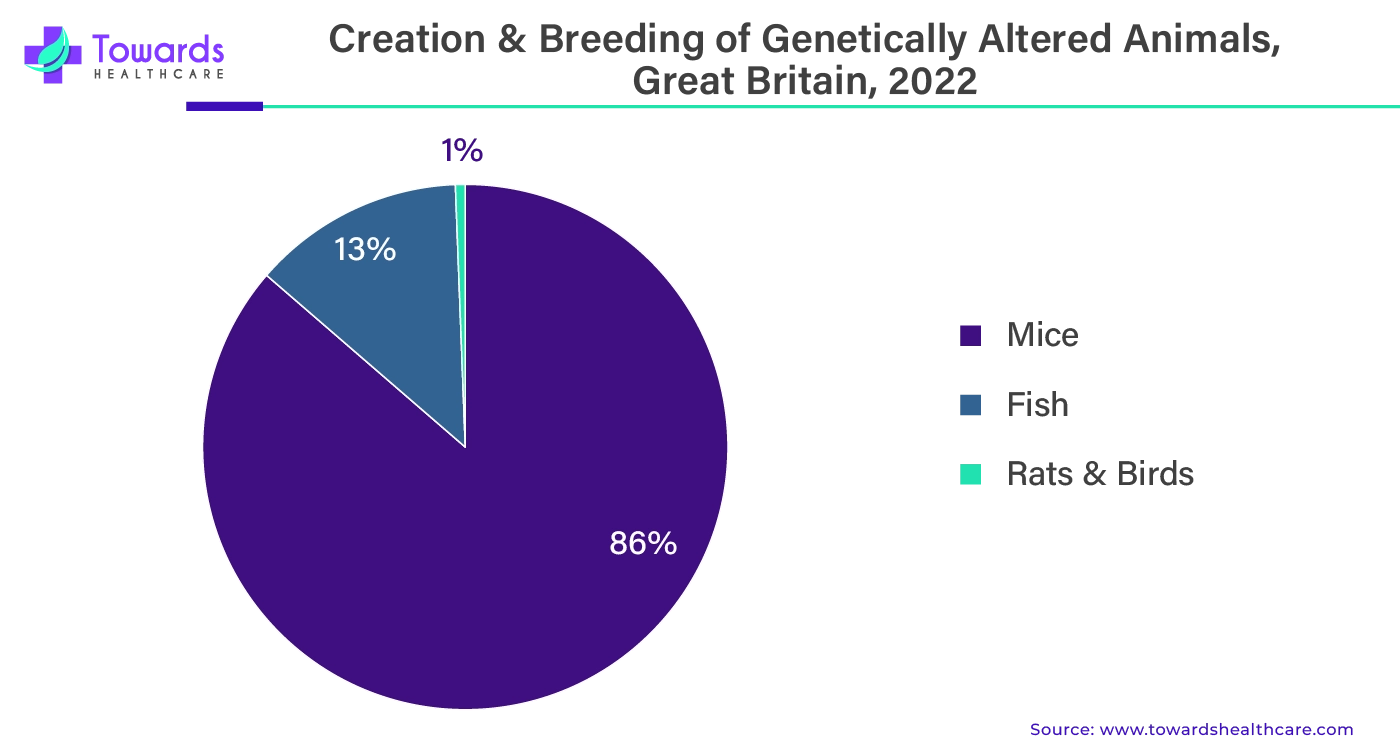
There are various ethical considerations that should be taken into account while conducting animal experiments. Negligence of ethical factors can restrain the rat and mouse model market. Scientists and the general public are becoming more opposed to animal research as a result of a growing understanding of animals' consciousness and their capacity for pain and suffering. There have also been doubts raised over the applicability of extrapolating results from animals to people. The "four Rs"—Reduction, Refinement, Replacement, and Responsibility—have therefore been adopted by Ethical Committees as a guiding concept when deciding whether or not to use animals in experiments.
Monoclonal antibodies are in high demand, and the demand will continue to grow due to research & development, usage in various biotechnological and pharmaceutical processes, and usage as therapeutics. This creates a great opportunity for the growth of the rat and mouse model market. This is because these models can be used to produce human monoclonal antibodies. Also, rate and mouse models can used for studying different monoclonal antibodies before going into the clinical trial phase. In order to produce hybridoma cells that produce monoclonal antibodies (mAbs) against antigens from other species, mice are often utilized. Rats are a good source of spleen B lymphocytes, which may be fused with myeloma cells to produce a high number of mAbs against antigens from mice.
For instance,
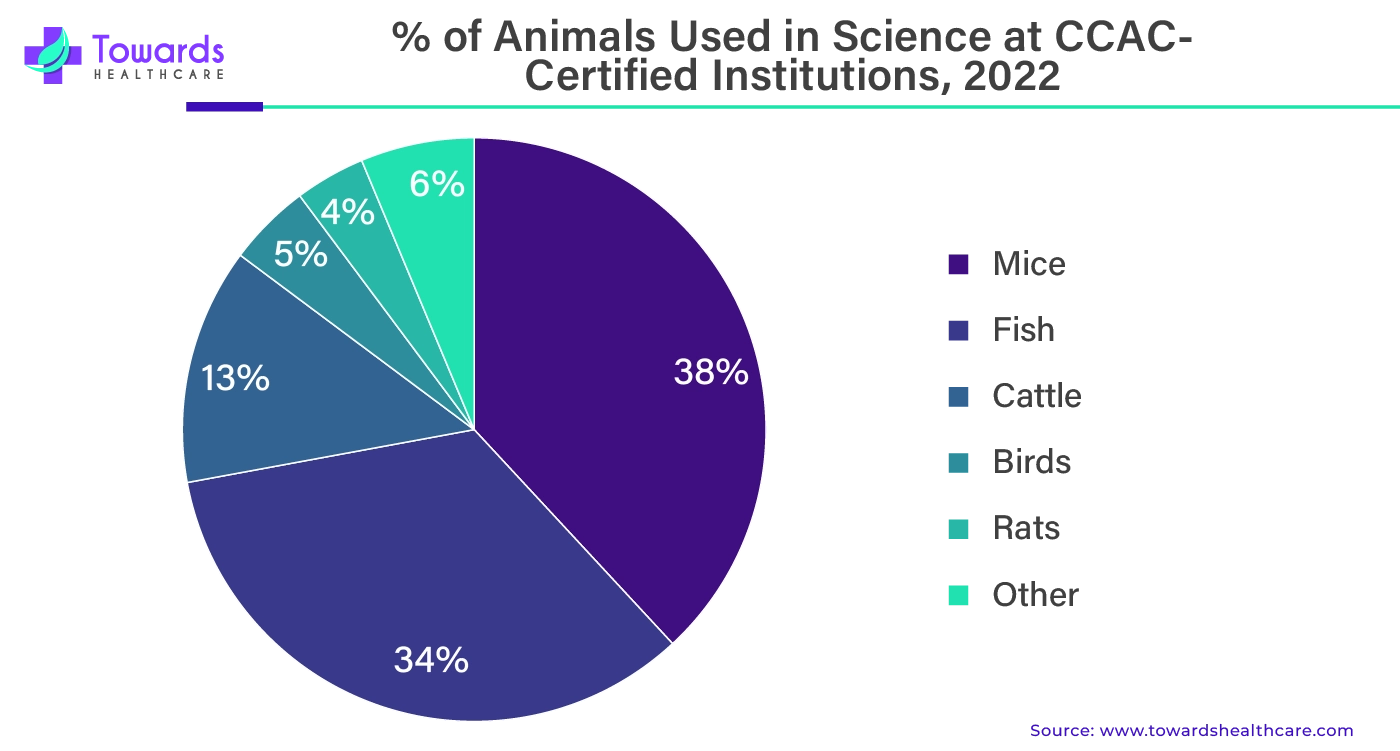
By model and service, the model segment held the dominant share of the rat and mouse model market in 2023. Because they are easily obtainable and manageable and share many physiological and genetic characteristics with humans, rodents—typically rats and mice—have been the most often utilized animals for biomedical research for over a century. A growing number of rodent models are distributed and preserved via the efforts of the Rat Resource and Research Center (RRRC) and the MU Mutant Mouse Regional Resource Center (MMRRC), which act as cohesive repositories. A rising number of genetically modified mice and rats are produced by individual researchers and huge federally supported multi-group collaborations, which are driving up the usage of rodents in biomedical research and creating a wide variety of unique strains and models.
By model and service, the services segment is estimated to register the fastest CAGR in the rat and mouse model market during 2024-2034. There are different services associated with animal models. For instance, cryopreservation is used to preserve different animal cells for future use. The breeding service is used for developing GMOs and studying the impact of genetics on offspring, for developing more lines of one generation, and so on. Genetic testing is another service used in animal models. It is done for studying animals and genetic disorders, evolution, the impact of different factors on genes, and so on.
By application, the cancer segment held the largest share of the rat and mouse model market in 2023. Cancer is a hotspot for medical study because it has historically been the subject of global human interest. Based on how the animal was made to develop cancer, animal models are divided into several categories. Although other species, including zebrafish, play crucial and complementary roles as cancer research models, mice have long been the main animal model for basic and preclinical cancer research. Genetically modified mouse and zebrafish cancer models have been produced via a variety of therapeutic approaches, such as chemical or physical mutagenesis, viral infection, transgene insertion, homologous recombination, and the recently developed gene edition method. The techniques for developing cancer animal models are becoming more varied as research progresses; these techniques include gene programming, xenotransplantation, chemical induction, and so forth.

By application, the genetic diseases segment is expected to grow at the fastest rate in the rat and mouse model market during the forecast period. Because animal models share many genetic characteristics with people, they can be very helpful in the research of human genetic illnesses. Simulate organisms are widely employed in practical research in agriculture, industry, and medicine, where they are used to simulate and comprehend illness as well as to test new methods of treatment. Beyond helping to understand many elements of basic biology, model organisms are very useful. Microbes to primates comprise the wide spectrum of model organisms available. The primary model of hereditary human illness is generally accepted to be mice.
By end-use, the pharmaceutical & biotechnology companies segment held the largest share of the rat and mouse model market in 2023. Currently, the only safe way to produce medications is through animal testing, even though the pharmaceutical industry is always coming up with innovative options. Prior to being tested on people in a clinical trial, a medication's safety in animals may be evaluated, which greatly lowers the possibility that a prospective new drug would have substantial side effects or bad patient reactions. Pharmaceutical firms are required to adhere to stringent international and UK regulatory regulations aimed at safeguarding patient safety while developing novel medications.
In the case of biotechnology, animal models like rats and mice are used for conducting various genetics-related experiments, the development of genetically modified products, the development of humanized-animal models, studies associated with evolution, testing of antibodies, and so on. As these products and services are developed for human use, safety is ensured using animal models.
By end-use, the contract research & manufacturing organizations segment is anticipated to grow at the fastest rate in the rat and mouse model market during the forecast period. The pharmaceutical sector has seen a significant rise in the use of contract manufacturing, which gives businesses the flexibility and know-how they need to handle the challenges of producing drugs. There are several benefits to contract manufacturing, such as lower costs, easier access to specialist knowledge, and improved operational effectiveness. Pharmaceutical businesses may save a lot of money by working with CMOs to avoid having to establish and operate manufacturing facilities. Alternatively, they might put money into invention and the creation of novel medications. Furthermore, CMOs frequently have access to state-of-the-art technology and regulatory knowledge, guaranteeing that manufacturing complies with strict quality standards and legal requirements.
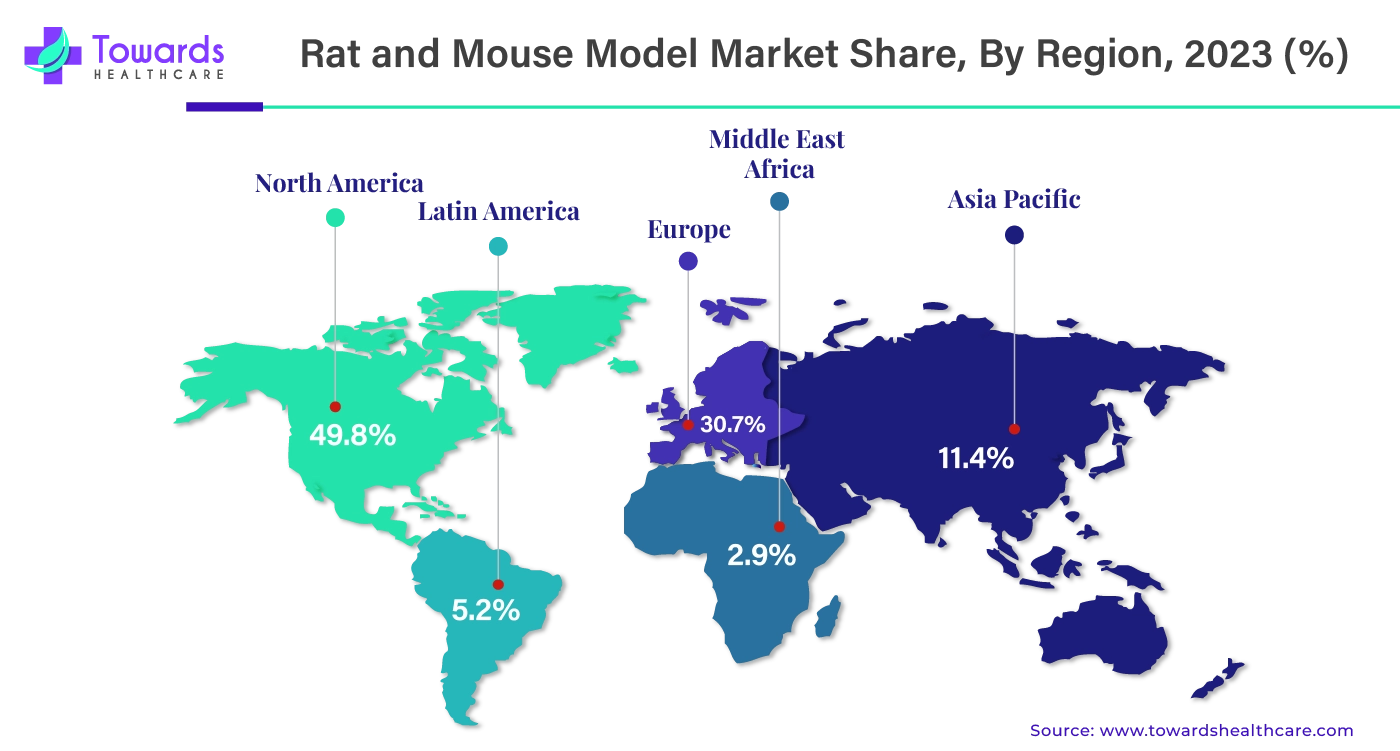
By region, North America dominated the rat and mouse model market share by 49.8% in 2023 because of growing costs for healthcare, more investment in R&D, and a growth in the incidence of infectious or non-communicable illnesses. It is projected that the many activities that the country's market participants are engaged in, including partnerships and agreements, would propel the market's expansion over the projection period.
In order to promote high standards of moral animal care and usage in research across the country, the Canadian Council on Animal Care (CCAC) is a nationwide nonprofit organization that works in the best interests of Canadians. Established in 1968, the CCAC creates recommendations based on the opinion of experts in the field and the most recent interpretation of scientific data. It then supervises the application of these standards, certifies and evaluates the institutions that use animals in research and offers training materials and tools. High standards of moral animal care and use are ensured by the CCAC and its network of volunteer experts in biomedical laboratories, where researchers study basic science; veterinary colleges, where students learn how to treat animals; and national parks, where biologists study wildlife populations.
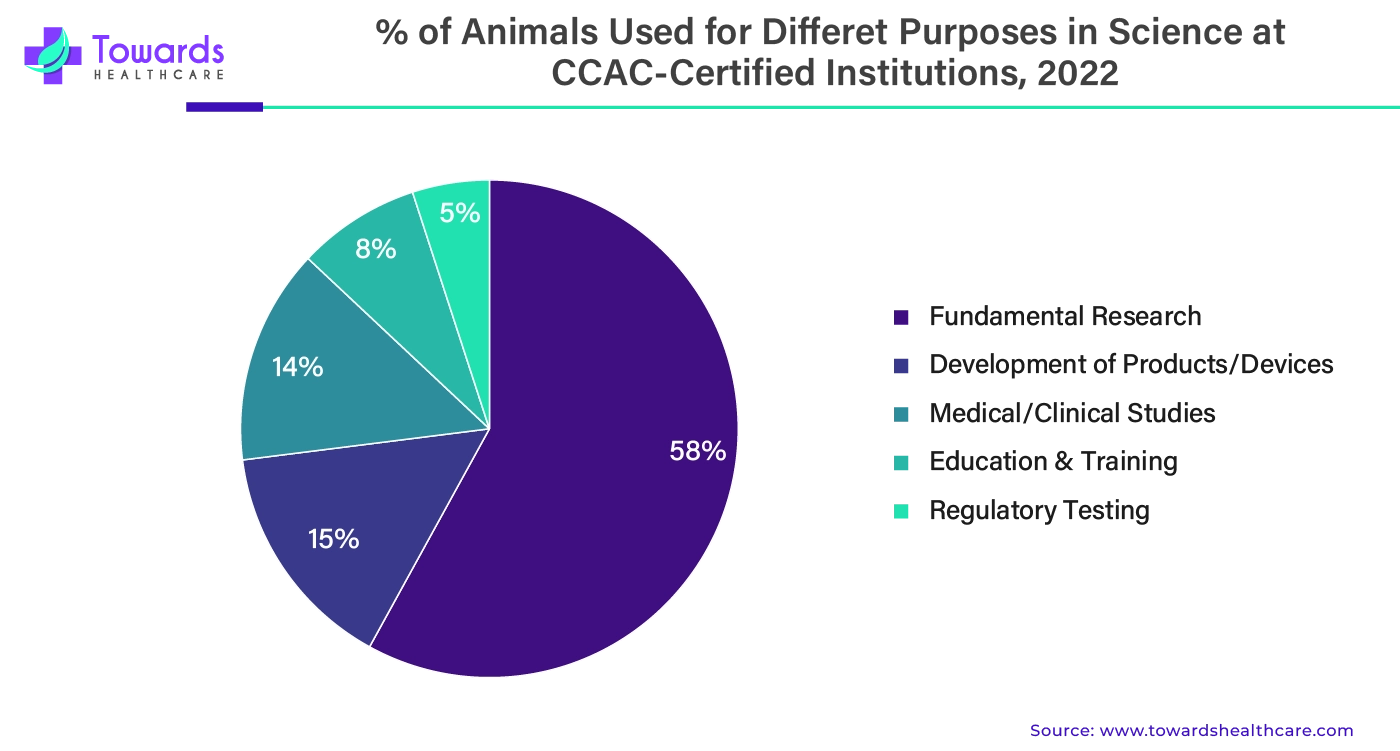
By region, Asia Pacific is expected to grow at a significant rate in the rat and mouse model market during the forecast period. This area is expanding quickly because of growing investments in the biotechnology and healthcare industries, as well as an increase in industry-academia partnerships. The industry is also boosted by the expansion of pharmaceutical production in nations like China and India. It was determined that a state-of-the-art resource facility for pre-clinical research was necessary due to the increasing demand from academic institutions, research centers, and the pharmaceutical and biotech sectors. The establishment of the National Animal Resource Facility for Biomedical Research (NARFBR) was decided upon after careful consideration with the stakeholders from both government and commercial organizations. One hundred acres of free land were provided by the Telangana state government in the biotech hotspot of Genome Valley, Telangana, India.
Europe is considered to be a significantly growing area, due to the growing drug discovery research leading to an increasing number of preclinical trials. The rising prevalence of chronic disorders also necessitates researchers to develop novel drugs. The rising investments and collaborations enable researchers to use advanced technologies required for drug discovery and development. The burgeoning pharmaceutical sector and favorable government policies contribute to market growth. Several regulatory agencies rely on preclinical study data before allowing for human clinical trials.
Germany Market Trends
In 2023, there were 1.46 million uses of animals in various experiments in Germany. Out of these, 672,000 animals were killed to use their organs and tissues for scientific purposes. 73% of the total tests in Germany were based on basic and applied research, and 17% were conducted to assess the safety and efficacy of medicinal products.
UK Market Trends
There were approximately 2.68 million experiments on animals in British laboratories in 2023. Mice were the most widely preferred animal used in 1.9 million experiments, accounting for 60% of all the experiments. Moreover, rats were used in 148,189 experiments, or 9.8%. In 2023, 52% of experiments were basic research, while 25% of experiments were applied/translational research.
| Name | The University of Texas Health Science Center |
| Recent Development | In July 2024, Novel insights into the development of immunotherapies and disease models are promised by a breakthrough in biomedical research. A humanized mouse model with a human immune system and a gut microbiota that resembles that of a human being has been developed by researchers at The University of Texas Health Science Center in San Antonio. This animal model can mount certain antibody responses. |
| Company Name | SMOC |
| Headquarters | Shanghai, China, Asia Pacific |
| Recent Development | In January 2024, with the help of an expert gene editing team and years of independent research and development, SMOC established U-HuDTMbase®, a resource library of therapeutic target-humanized mouse models, to fulfill a variety of needs on humanized mice. All of the regularly investigated topics, including cancer, metabolism, immunology, inflammation, and more, have been essentially covered by the more than 600 therapeutic target-humanized mouse models that make up U-HuDTMbase®. These models include several background strains, such as C57BL/6, BALB/c, NMG, and others. |
By Model and Service
By Application
By End-use
By Region
December 2025
December 2025
December 2025
December 2025